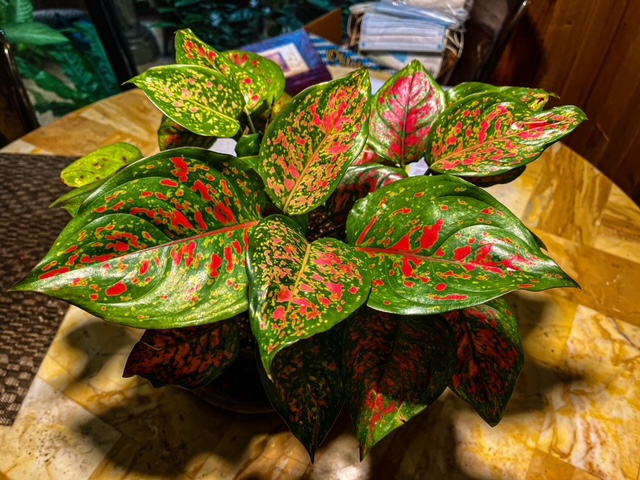
What’s in the name: The plants comprising the Genus Aglaonema are known by several names. Way back when growers, used one phrase for our plant: Chinese Evergreen. This colloquialism seems to have fallen out of favor some time ago and I have know them only by the proper genus name Aglaonema, derived from the Greek words Aglos -meaning bright- and nema -meaning thread. But plant names are notoriously fickle and a neologism, produced by social media platform Instagram, has corrupted and truncated the proper genus name to simply ‘Ags.’
This twisting of the horticultural vernacular wouldn’t normally be a problem, as it’s happened many times and to many different plants. But in the case of the Aglaonema, the plants themselves are changing too! The old varieties like ‘Silver Queen’ and ‘Maria’ are known to tolerate the cardinal sins of indoor plant keeping: too little light, cold temperatures, and careless watering. As the British would say, “You’re gran could’ve kept the plant lookin’ fine ‘enuff.” Below is Urso’s, enormous, underpotted ‘Maria’ specimen that routinely weathers night temperatures in the upper forties.
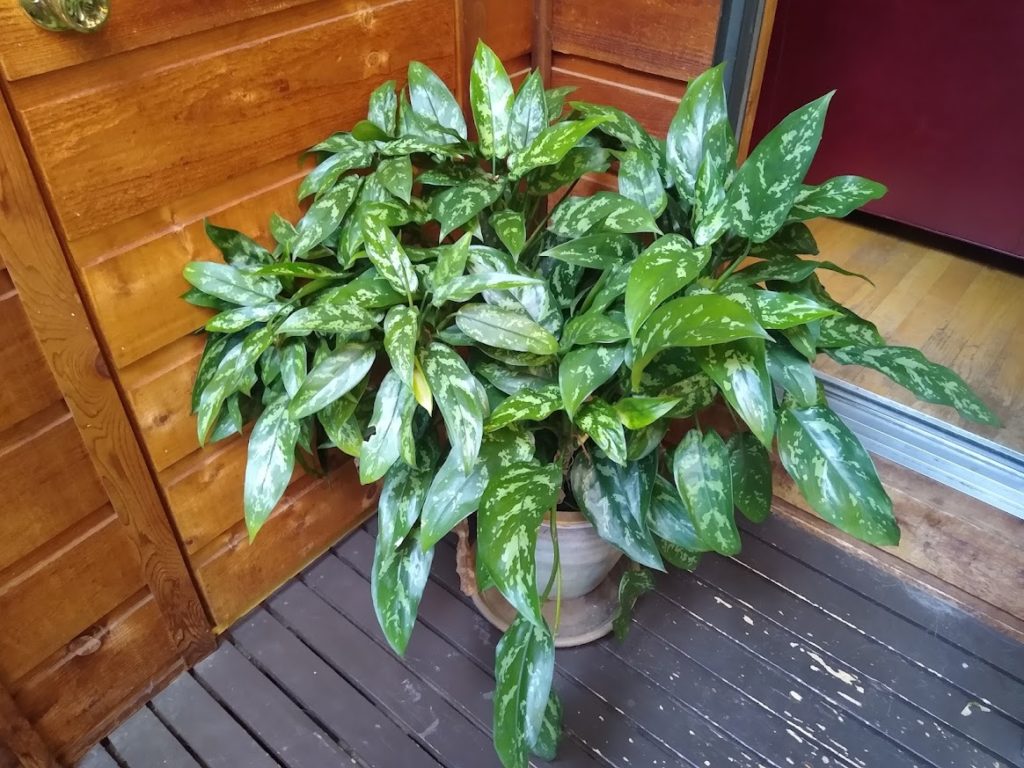
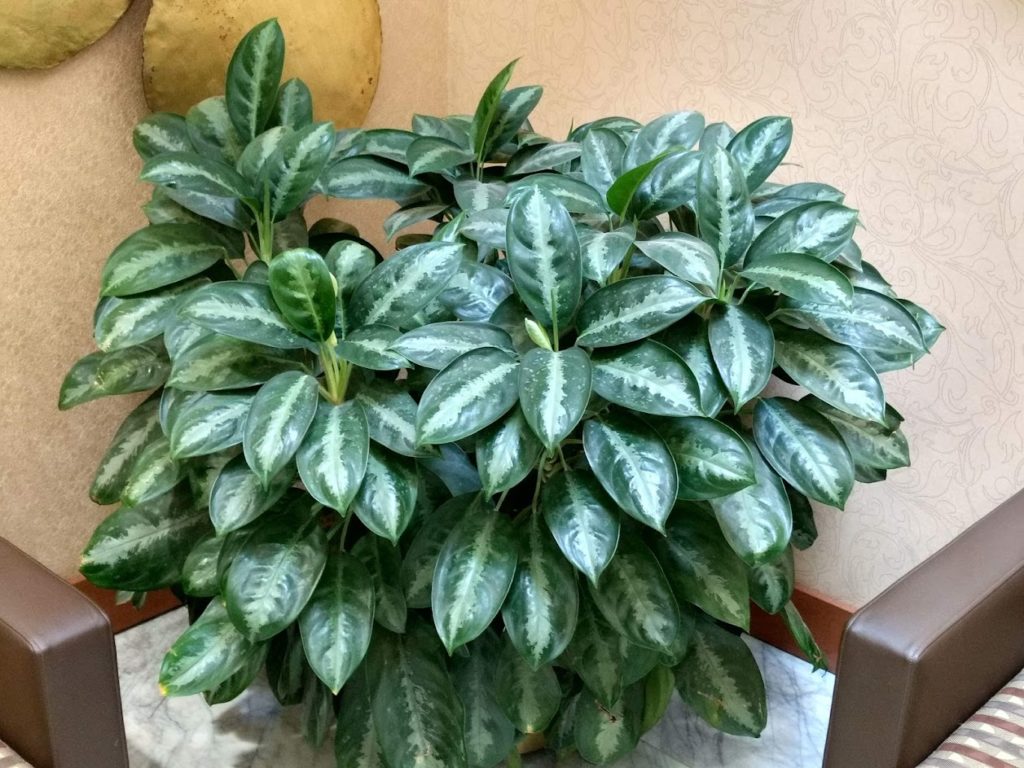
These are representative of what you can expect of older varieties. Despite sub-optimal conditions, they can do well and become extremely large. The stems are quite thick and don’t require staking, contributing greatly to the plants’ durability and ease of maintenance. Appearance wise, they are calming and almost hypnotic in some cases; you’ll get lost in the subtle variegation when viewing them in the fading light of dusk. Best of all they’re cheap; a fully grown plant in a 10″ pot runs around $55; at a box store a smaller plant in a 6″ pot could be had for as little as $10.
The Instragram Ags. are quite different a different breed from the old warhorses discussed above. Their bright colors need more light to maintain vibrant shades of red and orange and their thin stems are delicate. A fully grown specimen will require staking to maintain an upright appearance. As previously mentioned, they don’t have anywhere near the cold tolerance of the older varieties; nights in the upper forties can cause permanent damage.
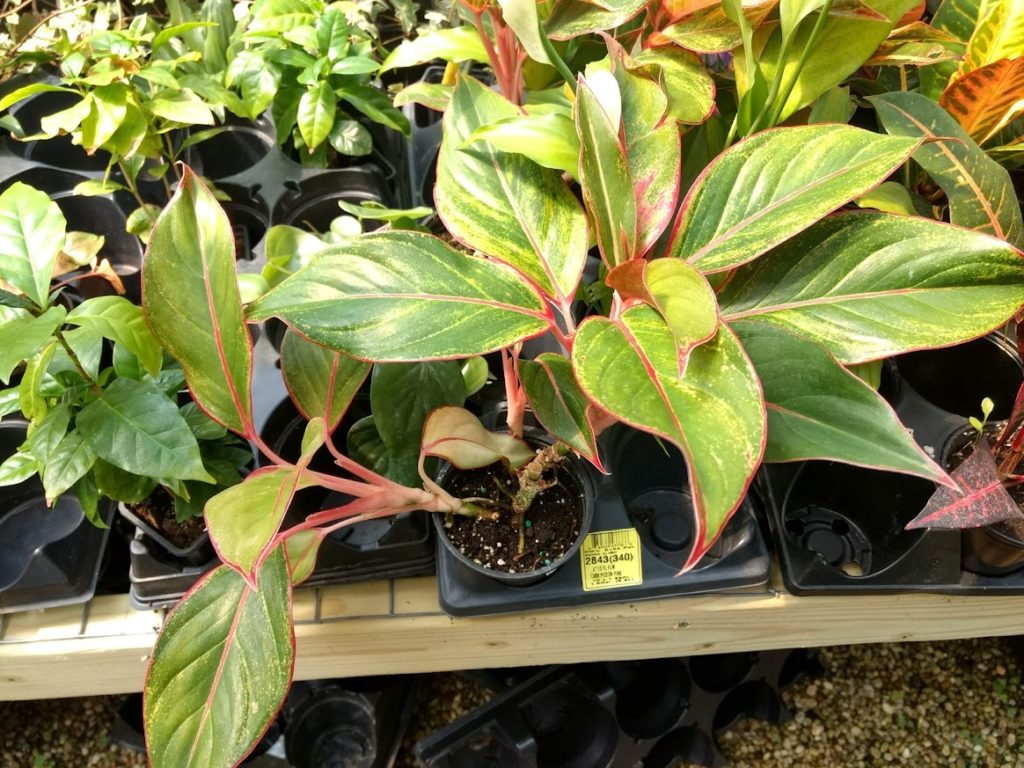
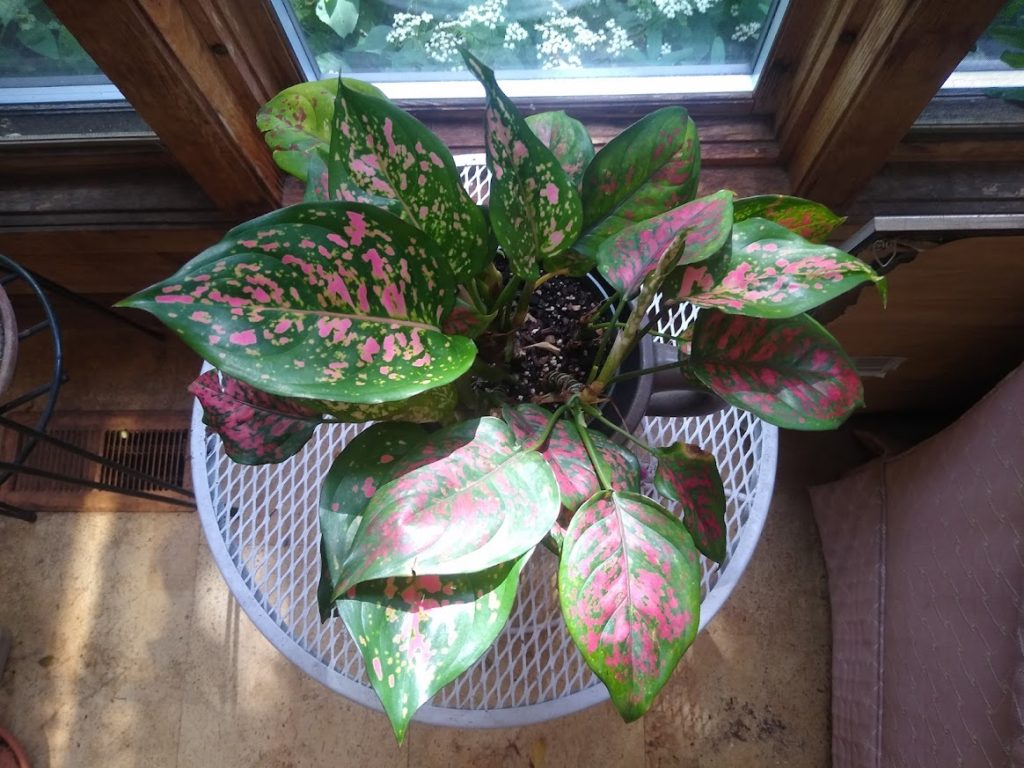
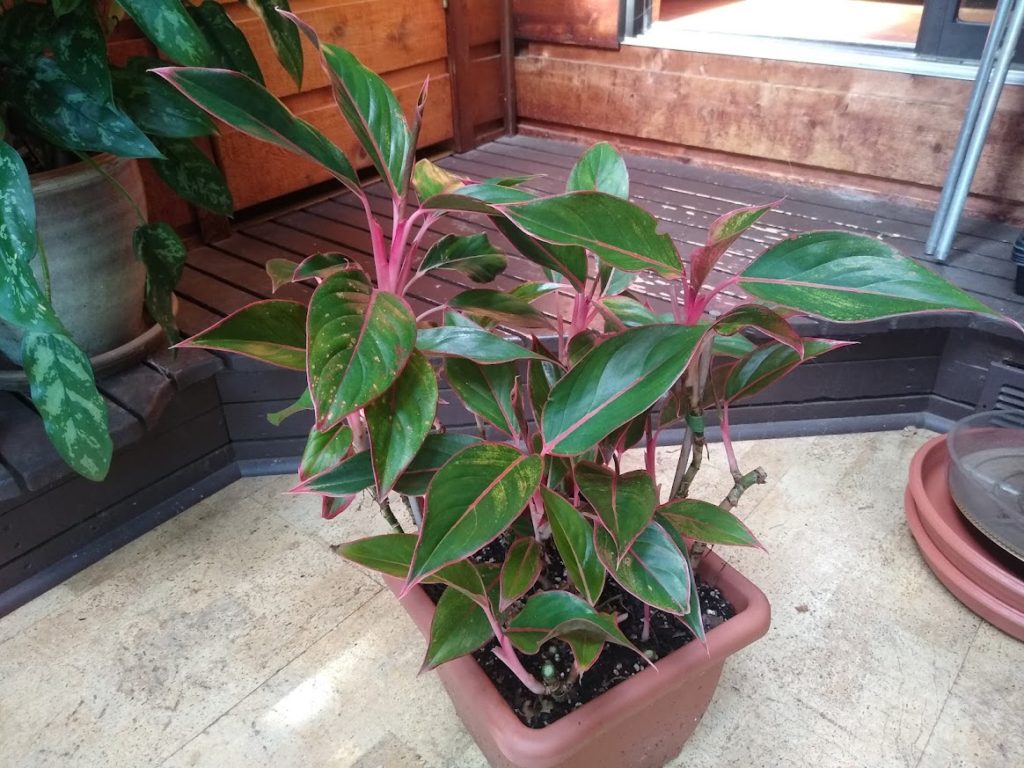
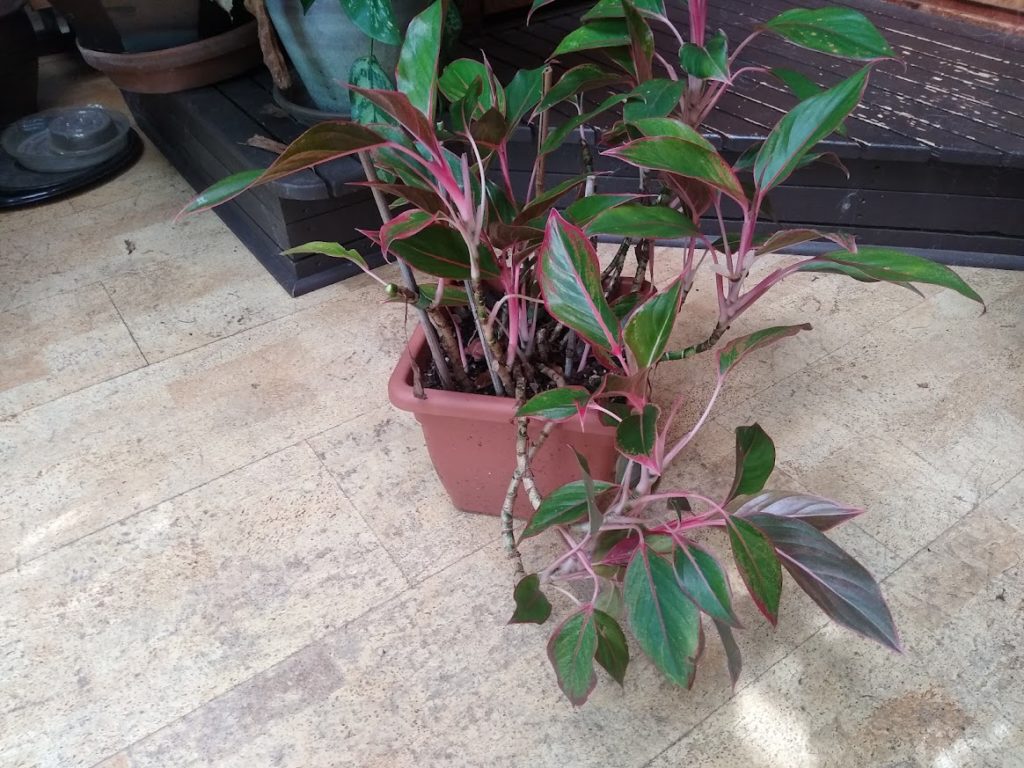
“Red Siam” was perhaps the first representative of what I call the Instagram Ags. It showed up on my radar around 2013 and the prices were very high. Luckily more cuttings made it to the market and plants could be purchased relatively cheaply. The fragile stems will break with little force. Urso’s dog, a great Pyrenees, has broken several stems of a fully grown Siam (pictured above) with her tail. Staking the longer stems is required to keep the plant looking neat and compact.
Aglonema ‘Red Valentine’ is one of the most popular new varieties. To keep it happy, it requires brighter light, higher temperatures, better drainage (add a little orchid bark to the potting mix), and careful watering. It will also take longer to recover when brought home from the plant shop or unboxed from the mail. Give it at least a month to acclimate to new conditions. Urso’s shed many leaves the first two months or so that I had it.
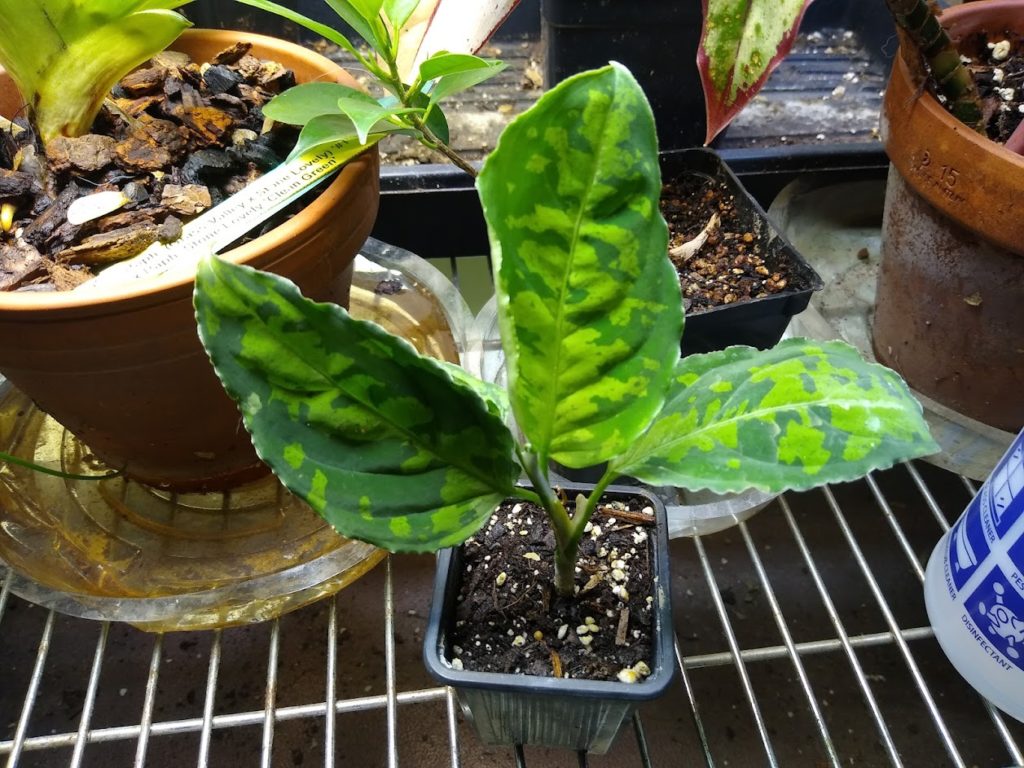
Perhaps the most representative of the Instagram driven ‘Ag’ revolution is the ‘Pictum Tricolor’ above. I’ll admit that I spent way too much money on it and one of the reasons for my purchase was so I had something to blog about! I’ve seen a lot of online pictures of this one, and they frequently have curled leaves. Normally, curled leaves are a sign of overwatering, but these seemed to be planted in very dry soil. A conundrum that bears further investigation.
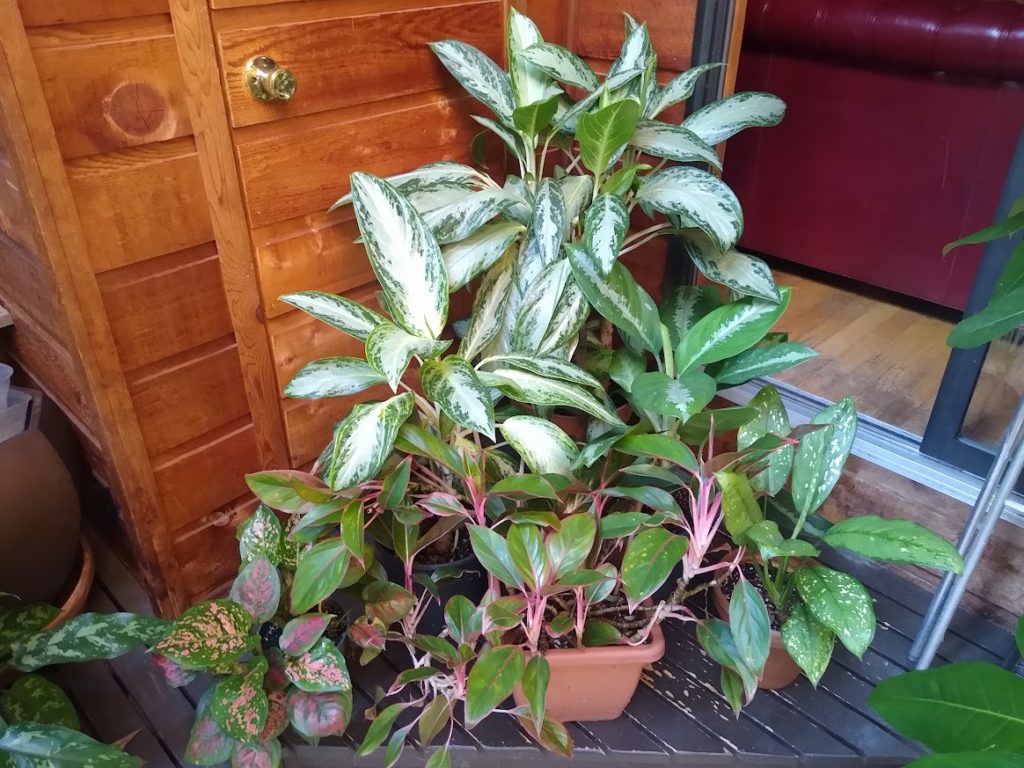
A HAPPY FAMILY?
Given the different cultural requirements of the newbies and the old fogies, is it possible to group the different varieties together? Only if they’re given optimal conditions: bright light (say, from an east window, or several hours of artificial light from 400-600 foot candles) and a warm ambient temperature that rarely drops below 60 degrees Fahrenheit. In other words, it isn’t likely and is often unpractical to group the two classes together. The old Ags are great because they’re tolerant of the dim corners in your house, whereas the newer Ags are great for adding a touch of vibrant color front and center. It’s much like expecting aristocratic and working families to coexist peacefully. A nice thought, but highly unlikely>